Ever notice that some wildfires have boring, generic names like the Valley Fire? But then others have seemingly random names like the Waldo Fire? Maybe you’ve even wondered where wildfires get their names… Here at RedZone we thought to share the industry standard for wildfire naming criteria. In addition, we took a look in our wildfire database for the top names used, historically.
Most often the name is determined by the initial attack incident commander or the fire dispatcher. The name is generally based on the geographic location of the fire or a nearby geographic feature, i.e. mountain, canyon, valley, river, etc. Seemingly most often, it is the name of the road where the fire was reported.
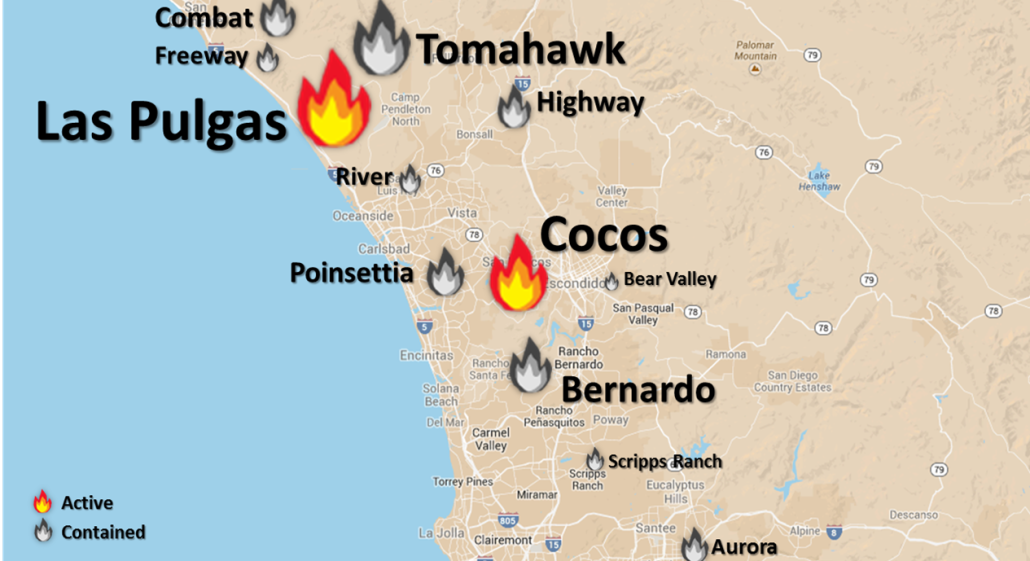
Example of wildfire names used during the San Diego Complex in May of 2014
Typically, the road name from the 911 caller is the most common for wildfire incident names. But, if a new wildfire began away from roads, say near Green Lake, it might become the “Lake” Fire. Or, the equally obvious, the “Green” Fire. But, if either or both of those names were already used that calendar year, it cannot be used again. Then, the dispatcher may decide to coin the fire as the “Green Lake” Fire to be more specific. Another common occurrence is the option to use a sequential-type name such as the “Lake 2” Fire. This is common for areas where few geographic names exist or where a fire name has been used that calendar year already. Earlier this month, the Border 32 fire grew quite large in southern San Diego County. With that name, we know this was the 32nd named ‘Border’ fire along the US/Mexico border for the year. In the case of the San Diego Complex in the map above, multiple separate wildfires are often joined into one lone-named incident. Complexes are important for both wildfire management and financing purposes.
Top Historic Fire Names
So as we can see, the answer isn’t as easy as the pre-determined alphabetical order of our Pacific and Atlantic hurricanes. Both oceans’ hurricane names are also retired after significant losses/cost take place; not the case with wildfires. When we looked at wildfire names going back to 1900 we found generic geographic names and tree types as the most commonly found, with Cottonwood, Bear, and Canyon leading the way. Favorite random names at RedZone we’ve come across include the Izzenhood and Poodle Fires in Nevada and the Carrot Fire in Wyoming.
Top Wildfire Names (1895-2010)
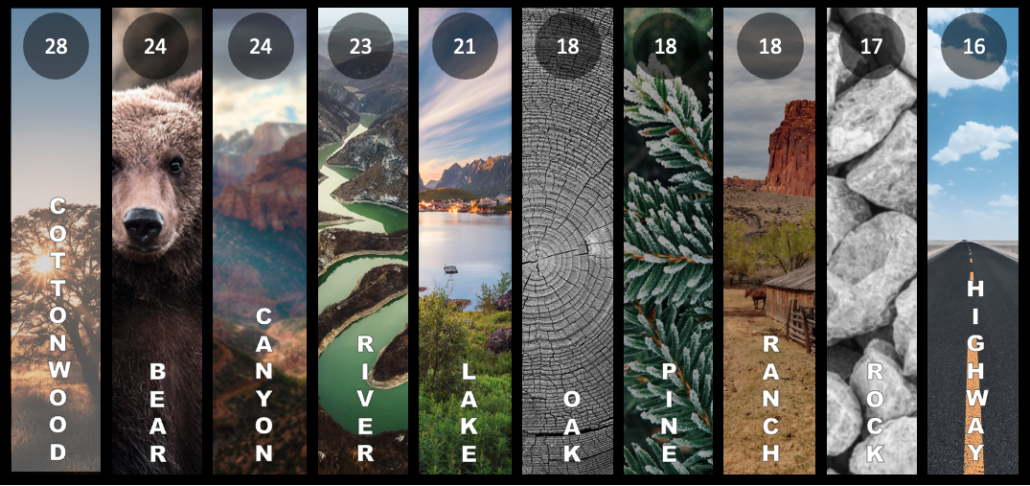
Historically, RedZone’s extensive wildfire database shows those generic geographic names lead the way when it comes to naming wildfires.


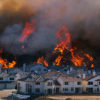
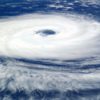
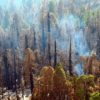
One Comment